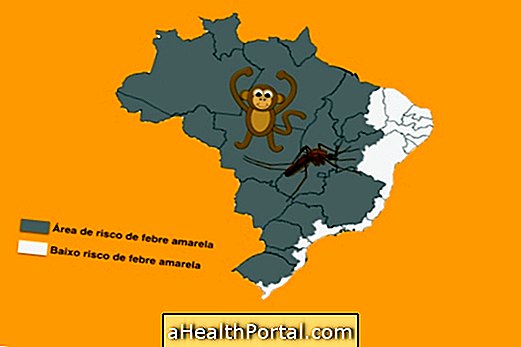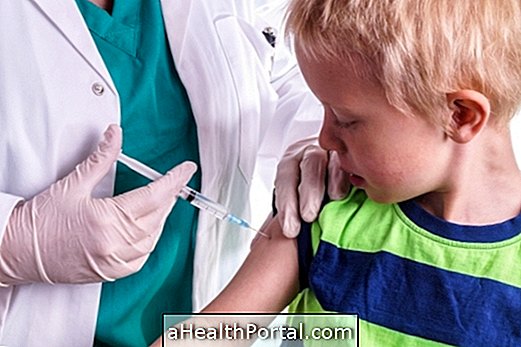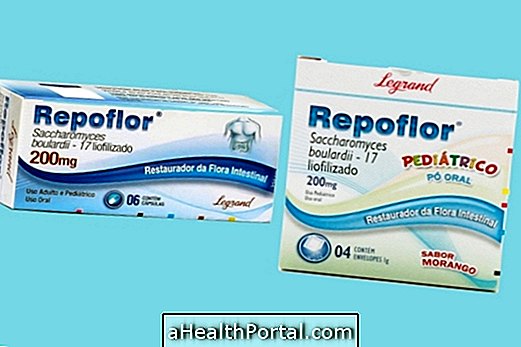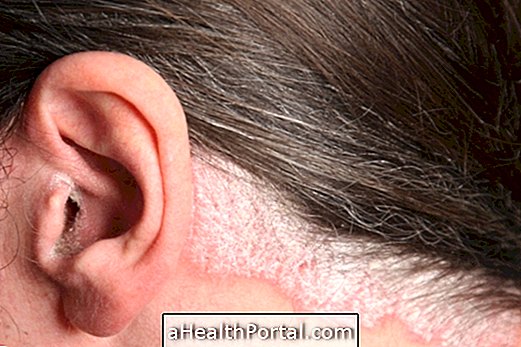Bullous erysipelas is a more severe type of erysipelas, characterized by a reddish and extensive wound, caused by the penetration of a bacterium called Beta-hemolytic Group A Streptococcus through small fissures in the skin, which may be a mosquito bite or a ringworm on the feet, for example.
In common erysipelas, this wound is more superficial and extensive, and in the case of bullous erysipelas blisters may form with clear or yellowish liquid. The wound is deeper and may in some cases cause complications and affect the fatty layer and even the muscles.
Although it may appear in anyone, bullous erysipelas is more common in people with impaired immune systems, advanced cancer, HIV-positive or decompensated diabetics. In addition to erysipelas, a type of skin infection that may also arise is infectious cellulitis, which usually affects deeper parts of the skin. Check how to know if it is an erysipelas or infectious cellulitis.
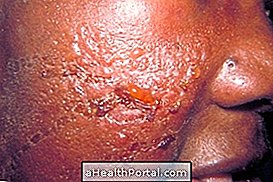

Bullous erysipelas is not contagious, that is, it is only person-to-person.
Main symptoms
The symptoms of bullous erysipelas are:
- Red, swollen, aching skin, approximately 10 cm long, with blisters showing transparent, yellow or brownish liquid;
- The appearance of "tongue" in the groin, when the wound touches the legs or the feet;
- Pain, redness, swelling and local temperature increase;
- In severe cases, there may be a fever.
When the infection worsens, especially when the treatment is not done correctly, it is possible to reach deeper layers of the skin, such as subcutaneous tissue and may even cause destruction of the muscles, as in necrotizing fasciitis.
Confirmation of the diagnosis of bullous erysipelas is made by the evaluation of the general practitioner or dermatologist, which identifies the characteristics of the lesion and the symptoms presented by the person. Examinations may be requested as a blood count to monitor the severity of the infection, and imaging tests such as computed tomography or MRI can be ordered in case of lesions that reach very deep layers, muscles or bones.
Learn more about the features and how to identify erysipelas.

What causes erysipelas bullosa
Bullous erysipelas is not contagious as it arises when bacteria that already live in the skin and in the environment can penetrate the skin through a wound, an insect bite or chills in the feet, for example. the main causative bacterium is Streptococcus pyogenes, although other bacteria may also cause it less frequently.
People with weakened immunity, such as those with autoimmune diseases, uncontrolled diabetes, HIV, as well as obese and people with poor circulation, because in these cases the bacteria can proliferate more easily.
How is the treatment done?
Treatment for erysipelas bullous is done with antibiotics prescribed by the doctor. Generally, the first choice is Benzathine Penicillin. In addition, swelling reduction is important, making absolute rest with the legs elevated, and it may be necessary to bandage the leg to lessen the swelling more quickly.
Curing of erysipelas bullous can be achieved within approximately 20 days after the start of antibiotic therapy. In case of repetitive erysipelas, it is advisable to treat with penicillin G benzathine every 21 days, as a way of preventing new pictures of the disease. See more about antibiotic treatment, ointment and when you need to be admitted to the hospital.
In addition, during the treatment of erysipelas, the dressing is recommended by the nurse, with correct cleaning of the lesion, removal of secretions and dead tissues, and the use of ointments that help in the healing process, such as hydrocolloid, hydrogel, papain or colegenase, depending on the characteristics of the injury of each person. Check out how to make a wound dressing.

